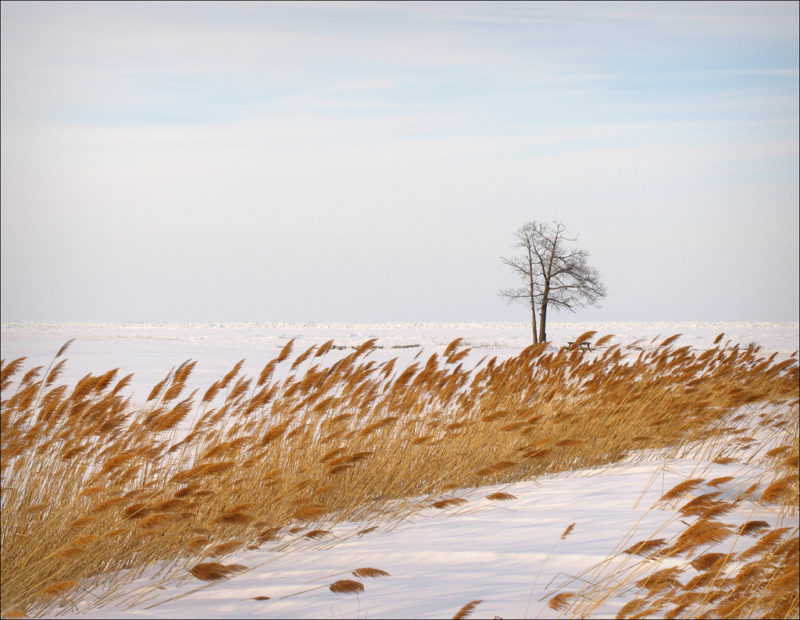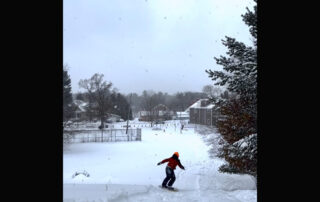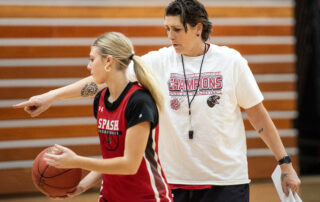Editor’s Note: Even ugly things can be beautiful sometimes. A day on snowshoes helped commentator Chris Seroogy find beauty in a winter landscape.
I’m one of those few people who love Wisconsin winters. When the snow piles on the roadside and the wind creates moonscape snow dunes, I’m making plans and finding ways to appreciate the season.
One Saturday, I cruised down to the Ken Evers Nature Area for a snowshoe hike with friends. After greetings, we donned our gear and headed on the trail towards the Pulliam Power Plant. The bay of Green Bay stretched out to our left but was hidden from view.
Living in the bay area, I see firsthand the explosion of the invasive species: the loosestrife that congests the waters’ edge, and recently the more horrible Phragmites australis, the giant reed grass with its sword-like leaves and thick rootstock. I have bemoaned the Phragmites’ willful existence as it took over our sand pit pond. Perhaps it started with some seeds escaping a bird’s beak or from their droppings that took root, slicing up between the rails of the two wooden bridges and thickly rising along the entire pond’s edge. Invasive does not even seem the right word for so horrible a plant that has stolen so much land and shoreline.
Knowing this, I wasn’t surprised to see its searing blonde winter leaves on both sides of the trail and extending far out into the bay. As we trekked along, we saw deer tracks leading down the bay’s bank, forging a narrow course through the Phragmites. We followed the path over the bank and onto the snow-laden ice of the bay shore.
It’s one thing to see these giant green invasives from the road and quite another to walk between them. The snow cupped the plant base and the leaves rose up, some bent, some piercing the sapphire sky, others rustling as our jackets brushed against them. Their tasseled seed heads bowed non-defensively, yet the stalks stood tall as eight-foot shielding sentinels. Blocking the wind, they let in only the warm February sunlight.
For once, I didn’t curse the Phragmites but saw the beauty of sand-blonde against white and blue–of towering, protective height as we stumbled our way over banks, sometimes sinking, snowshoes and all, up to our knees. Making it to the end of the grass zone, we reached the frozen bay that stretched flat white to Long Tail Island and beyond. Looking around and back, we could see the slender stalks curve along the bay.
Though I begrudge the Phragmites’ destructive existence, I could set aside my disdain for those minutes. Just as winter can produce blizzards and treacherous roads, it also can display a serene, lunar landscape. Likewise, perhaps just for a moment, the Phragmites, too, can show beauty. Sometimes we need to suspend a belief to appreciate the splendor of something, wanted or not, to find another kind of treasure.











